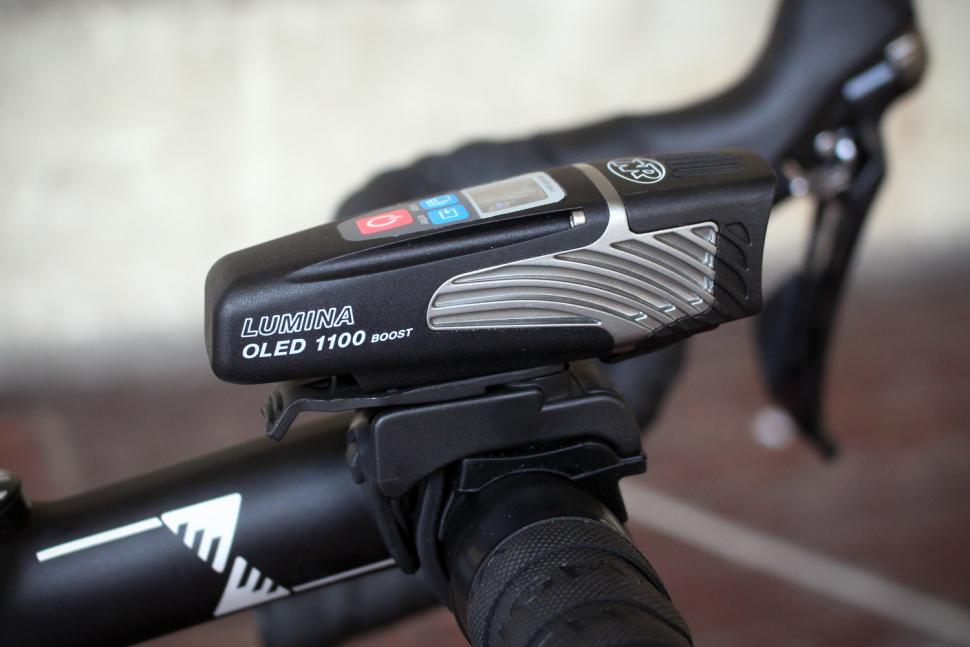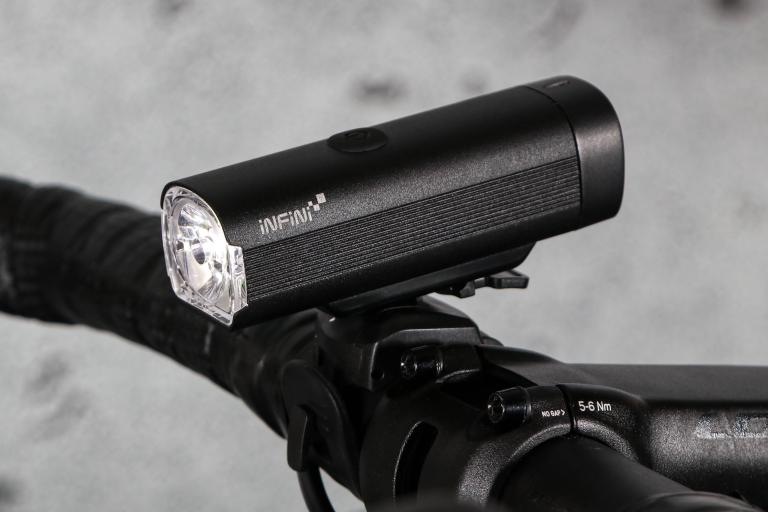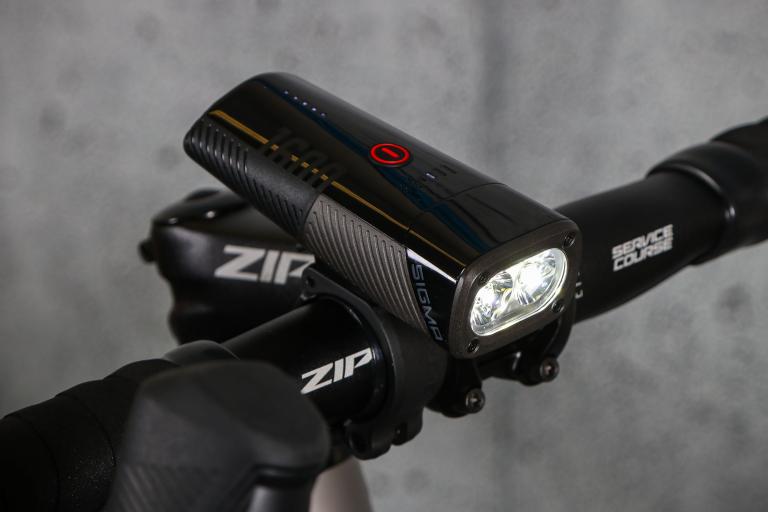- News
- Reviews
- Bikes
- Accessories
- Accessories - misc
- Computer mounts
- Bags
- Bar ends
- Bike bags & cases
- Bottle cages
- Bottles
- Cameras
- Car racks
- Child seats
- Computers
- Glasses
- GPS units
- Helmets
- Lights - front
- Lights - rear
- Lights - sets
- Locks
- Mirrors
- Mudguards
- Racks
- Pumps & CO2 inflators
- Puncture kits
- Reflectives
- Smart watches
- Stands and racks
- Trailers
- Clothing
- Components
- Bar tape & grips
- Bottom brackets
- Brake & gear cables
- Brake & STI levers
- Brake pads & spares
- Brakes
- Cassettes & freewheels
- Chains
- Chainsets & chainrings
- Derailleurs - front
- Derailleurs - rear
- Forks
- Gear levers & shifters
- Groupsets
- Handlebars & extensions
- Headsets
- Hubs
- Inner tubes
- Pedals
- Quick releases & skewers
- Saddles
- Seatposts
- Stems
- Wheels
- Tyres
- Health, fitness and nutrition
- Tools and workshop
- Miscellaneous
- Tubeless valves
- Buyers Guides
- Features
- Forum
- Recommends
- Podcast
review
£140.00
VERDICT:
Chiefly, the extra OLED control interface raises the bar over the 1100 Boost; it's costly, but worth it
Weight:
131g
Contact:
At road.cc every product is thoroughly tested for as long as it takes to get a proper insight into how well it works. Our reviewers are experienced cyclists that we trust to be objective. While we strive to ensure that opinions expressed are backed up by facts, reviews are by their nature an informed opinion, not a definitive verdict. We don't intentionally try to break anything (except locks) but we do try to look for weak points in any design. The overall score is not just an average of the other scores: it reflects both a product's function and value – with value determined by how a product compares with items of similar spec, quality, and price.
What the road.cc scores meanGood scores are more common than bad, because fortunately good products are more common than bad.
- Exceptional
- Excellent
- Very Good
- Good
- Quite good
- Average
- Not so good
- Poor
- Bad
- Appalling
If a single button operation with a multi-tiered light has ever confused and frustrated you (it has me on occasion), then Niterider might have the solution for you: an OLED screen that displays battery life and mode setting, while offering a slightly more intuitive three-button interface to select a mode.
Interestingly, the interface itself is not the only upgrade that's been made over the standard 1100 Boost model, although it's likely that it's helped pave the way. Now you get nine settings to choose from, in a three-tier layout.
Up top are the standard three static modes, and the boost mode that pumps everything up to 11(00 lumens). You get access to these settings in the same way as you would using the old single button system by using the red power button: a double click enters it into boost mode, while another double click takes it out again. All the while, the OLED screen shows what setting you're in, helpfully, as well as how much battery life remains if you leave it in a given setting.
You access the other tiers by pressing the 'page' button, which opens up a suite of five modes that pretty much covers any eventuality or need. You get:
Tier 2:
Low light with strobe
Standard flash
Walk mode (the 70lm static setting we saw with the 1100 Boost)
Tier 3:
Strobe
SOS
While not necessarily the most important setting, the SOS is a particularly nice touch, and shows that Niterider not only thinks about the worst case scenario for riders, but walkers and adventurers too. It'll last for 18 hours. Otherwise, battery life levels are right on a par with its 1100 Boost sibling – surprising, given that it's got an OLED display to power too. I suspect that this is helped by the fact that you can switch off the OLED display to help fortify that battery life.
It's even more surprising when we get the light on the road.cc scales too: despite the new interface, the light actually comes in at 11g lighter than the standard 1100 Boost. You can just about tell the difference while holding the light in your hands. On top of this, the actual body of the unit is slightly wider too (albeit a touch shorter, so overall volume is practically the same).
That width also influences the beam too. It's now very slightly wider/flatter than the non-OLED counterpart, while it's also slightly warmer in colour too. Niterider doesn't claim that it's changed the CREE LED, and to look at (while off, obviously) it appears like precisely the same unit, so this could simply be down to variance in the batch. The famous road.cc beam test will reveal the true extent of the difference of the shape.
The cover for the USB charge port has changed too, but thankfully the rubber cover itself is right up to standard – it doesn't fall out, creates a decent seal against weather, and is well tethered. Perfect. As a result, the device retains the IP64 water resistance of its siblings, and I've had no trouble with the seal around the OLED screen – no condensation with temperature changes or being left out in the rain.
> Read the latest road.cc reviews of front lights here
On the underside, the bracket interface is a slightly modified version, though it works just fine with the same bracket system as both the Lumina 900 Boost and the 1100 Boost. It comes with its own unit, of course, but functionality is exactly the same – just that the design on the bottom of the light has been adjusted, presumably to improve retention. It's still easy to release the light and clip it on, while the slight shortcoming in getting the ideal fit on narrow handlebars remains.
As for value, at £140 it's a very high price for a light of this size. Nevertheless, I'd sooner buy this over the standard 1100 Boost. While the light and battery lasts near-enough the same, this OLED version has an interface that is easier to use, very clear and offers a simple readout for essential information, a (potentially) useful SOS mode among a widened range of options, and arguably a better beam shape.
Verdict
Chiefly, the extra OLED control interface raises the bar over the 1100 Boost; it's costly, but worth it
road.cc test report
Make and model: NiteRider Lumina OLED 1100 Boost
Size tested: 1100 Lumens
Tell us what the light is for, and who it's aimed at. What do the manufacturers say about it? How does that compare to your own feelings about it?
Niterider says: "Introducing the Niterider Lumina OLED 1100 Boost Front Light, an innovative bike light that removes the guesswork related to battery life, allowing you to plan your next ride safely with complete confidence, day or night. The OLED multifunctional digital display screen delivers precise battery run times as a percentage and actual time for the Lumina OLED's 9 lighting levels.
"The Lumina OLED 110 Boost features a CREE LED at 6000k and a custom engineered reflector, producing a generous long-distance spot and wide flood beam pattern. With Boost Mode providing a stunning 1100 lumens of maximum light output, this makes the Lumina OLED highly capable for use when navigating through diverse riding conditions."
Tell us some more about the technical aspects of the light?
Features:
- OLED screen control interface
- 9 modes
- 1100lmn boost mode
- 'SOS' mode
- Rechargeable
- Easy-to-use strap
Rate the light for quality of construction:
8/10
Can't complain about the construction – just like other Niterider units.
Rate the light for design and ease of use. How simple was the light to use?
9/10
The OLED interface makes things even easier than before – using it is a doddle.
Rate the light for the design and usability of the clamping system/s
6/10
Easy to use, but optimal fit on narrow bar can be an issue.
Rate the light for waterproofing. How did it stand up to the elements?
10/10
I had this one left out in a morning downpour with no issues. The screen stands up to it too.
Rate the light for battery life. How long did it last? How long did it take to recharge?
8/10
Given that the battery ratings – 1 hour for the 1100-lumen boost mode – are accurate and are very, very similar to the standard 1100 Boost, there are no grounds for real criticism here.
Rate the light for performance:
9/10
All the modes you could want, plus a good beam shape and brightness.
Rate the light for durability:
8/10
It's built solidly, and you can rely upon it in poor weather.
Rate the light for weight:
9/10
It feels tangibly lighter than the 900 and 1100 Boost lights (11g on our scales), and they weren't exactly heavy to begin with.
Rate the light for value:
6/10
A £30 price hike over the normal 1100 Boost is a sizeable chunk, but I do think the OLED version offers a good amount more for your money. If it were my cash, I'd go with the 900 Boost for the ample power, or all-in with the 1100 OLED Boost for the features.
Tell us how the light performed overall when used for its designed purpose
Brilliantly. I really like the OLED interface.
Tell us what you particularly liked about the light
Brightness, OLED interface, beam shape.
Tell us what you particularly disliked about the light
The bracket, if anything.
Did you enjoy using the light? Yes
Would you consider buying the light? Yes
Would you recommend the light to a friend? Yes – if their budget can stretch to it.
Use this box to explain your score
It's a tangible improvement over the 1100 Boost, and I think worth the extra outlay if you want a full-featured front light with powerful output.
About the tester
Age: 27
I usually ride: Canyon Ultimate CF SL 9.0 SL (2016) My best bike is:
I've been riding for: 5-10 years I ride: Most days I would class myself as: Experienced
I regularly do the following types of riding: time trialling, club rides, sportives, general fitness riding
Latest Comments
- SecretSam 6 min 47 sec ago
343% only? Phew, for a minute there I thought we were being ripped off
- brooksby 1 hour 56 min ago
Are those numbers from the UK or are they worldwide?
- andystow 3 hours 23 min ago
Ok, just noticing this on my own bike. The rear wheel I bought from wheelbuilder.com. The front I rebuilt on my existing SON hub with a rim ordered...
- hawkinspeter 7 hours 52 min ago
Looks to me like they crashed into a "give way" sign
- jamesha100 8 hours 37 min ago
This is so sad but also so sadly familiar. I am not sure whether more punitive sentences - e.g. life driving bans - would make any difference but...
- chrisonabike 8 hours 57 min ago
Probably. But ... applied / enforced by whom? (See Private Eye's "Rotten Boroughs" page for evidence of how well that might work).
- Miller 9 hours 22 min ago
Because the reframing work in post is a right pain in the neck, the reframed quality doesn't match normal action cams, because the cameras are...
- staticV3 9 hours 32 min ago
Someone please explain to me. My Rockbros Q5 has:...









Add new comment
1 comments
Seen this light with rear light thrown in for £127, now that is a bargain